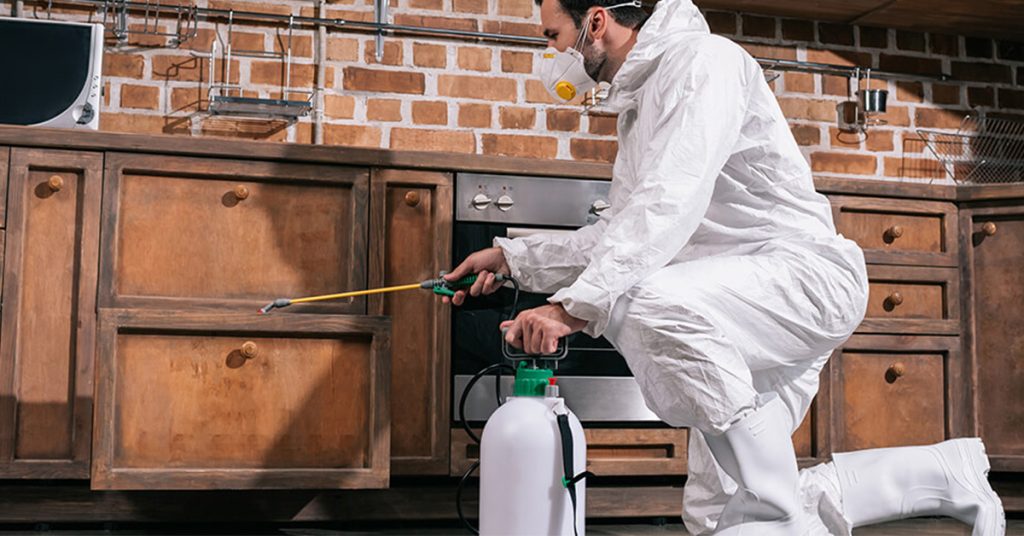Checking Out Problem and Therapy Techniques on the planet of Bug Control
The landscape of pest control includes a myriad of obstacles, specifically as problems of usual household insects remain to advance. Comprehending the habits and reproductive patterns of these annoyances is vital for creating reliable treatment methods. By integrating safety nets with advanced management methods, such as Integrated Pest Administration (IPM), home owners can better safeguard their environments. Nevertheless, the efficiency of these techniques might differ dramatically based upon certain scenarios. What hidden factors add to the success or failure of these techniques in different settings?

Usual Household Vermin
When it pertains to managing our living areas, comprehending common household parasites is essential. These bugs not only interrupt our comfort but can additionally present health and wellness risks and damages residential or commercial property. One of the most common family insects consist of ants, roaches, rodents, termites, and bed insects.
Ants, often seen foraging in cooking areas, can infect food and establish big colonies. Rodents, including mice and rats, can create structural damage and carry illness like hantavirus and salmonella.
Acknowledging the signs of these pests, such as droppings, nests, or attack marks, is vital for very early treatment (Pest Control Lockhart). Correct hygiene methods, sealing entry points, and preserving a clutter-free atmosphere work preventative measures. By identifying these typical home parasites and understanding their actions, property owners can take positive actions to mitigate problems, ensuring a healthier living setting
Understanding Parasite Infestations
Parasite problems can escalate swiftly, transforming a small nuisance right into a considerable trouble if not resolved immediately. Common factors contributing to problems include poor sanitation, architectural susceptabilities, and seasonal modifications that drive pests inside your home.
Determining the sort of insect is important, as various species show different habits and reproductive prices. Rats may develop nests in concealed locations while pests like roaches flourish in damp environments. Early detection commonly rests on acknowledging indications such as droppings, munch marks, or uncommon noises, which can show an issue before it ends up being serious.
Cozy, damp climates can assist in the rapid growth of pest populaces, while modifications in landscape design or construction can inadvertently create conducive environments. An informed technique to comprehending these characteristics lays the foundation for effective parasite administration techniques in the future.
Treatment Techniques and Strategies
Efficient therapy approaches and strategies are necessary for alleviating parasite infestations and restoring a safe environment. A complex technique is usually best, integrating chemical, organic, and mechanical techniques customized to the details bug and the extent of the invasion.
Chemical treatments consist of using pesticides and herbicides, which can properly get rid of bugs. Appropriate application and adherence to security guidelines are crucial to reduce risks to human beings and non-target microorganisms. Integrated Insect Monitoring (IPM) encourages the cautious use chemicals as a last hope, counting instead on surveillance and limit levels to identify intervention requirements.
Biological control methods involve introducing natural predators or bloodsuckers to minimize bug populaces. This approach is increasingly preferred, especially in farming settings, as it promotes ecological sustainability.
Mechanical techniques, such as traps and obstacles, give instant relief from insects without presenting chemicals. Alternatives consist of sticky catches for insects or physical barriers for rodents.
Eventually, the option of treatment method must consider the particular bug, the setting, and prospective impacts on human health and communities. A well balanced mix of these techniques can effectively manage problems while promoting long-term pest control options.
Preventive Procedures for House
Proactively attending to insect problems prior to they rise is essential for keeping a healthy and balanced home atmosphere (Pest Control Lockhart). article source Carrying out reliable safety nets can dramatically lower the probability of invasions, eventually protecting both your residential property and well-being

Correct landscape design also plays an essential role in prevention. Keeping shrubs and trees trimmed away from your home reduces the chances of bugs locating their method indoors. Guarantee that drainage systems are working successfully to avoid standing water, which can draw in insects and various other bugs.
Last but not least, regular assessments are recommended. Consistently checking for signs of bug task allows for early intervention. By embracing these safety nets, property owners can develop a setting that is much less friendly to insects, thus enhancing their general high quality of life and lowering the requirement for substantial insect control interventions.
Business Insect Control Techniques
A detailed method to industrial bug control is important for businesses intending to maintain a safe and sanitary setting. Efficient strategies involve a mix of regular inspections, employee training, and the application of Integrated Bug Monitoring (IPM) methods.
Normal assessments make it possible for very early detection of parasite activity, enabling timely treatment. Companies need to establish a routine timetable for these evaluations, concentrating on risky locations such as kitchens, storage space rooms, and waste disposal sites. Worker training is just as critical; team should be informed on the indicators of parasite problems and the significance of reporting them promptly.
Carrying out IPM techniques assists mitigate pest issues sustainably. This consists of environment adjustment, such as securing entry factors and lowering mess, along with utilizing natural deterrents prior to resorting to chemical treatments.

Furthermore, collaborating with a licensed parasite control service provider makes sure accessibility to professional understanding and advanced therapy options. This partnership can lead to personalized bug control prepares tailored to the certain requirements of business, minimizing risks and enhancing overall effectiveness. Ultimately, a proactive and educated technique fosters a pest-free environment, guarding both public health and wellness and business online reputation.
Verdict
Finally, effective pest control requires a comprehensive understanding of common Your Domain Name household insects and their habits, coupled with targeted treatment techniques. Executing preventative measures alongside treatment methods such as Integrated Pest Management and biological control boosts the capability to reduce infestations. Normal inspections and a mix of chemical and mechanical solutions better add to preserving pest-free settings. Ultimately, an all-around strategy to pest management is crucial for guarding living spaces from unwanted intruders.